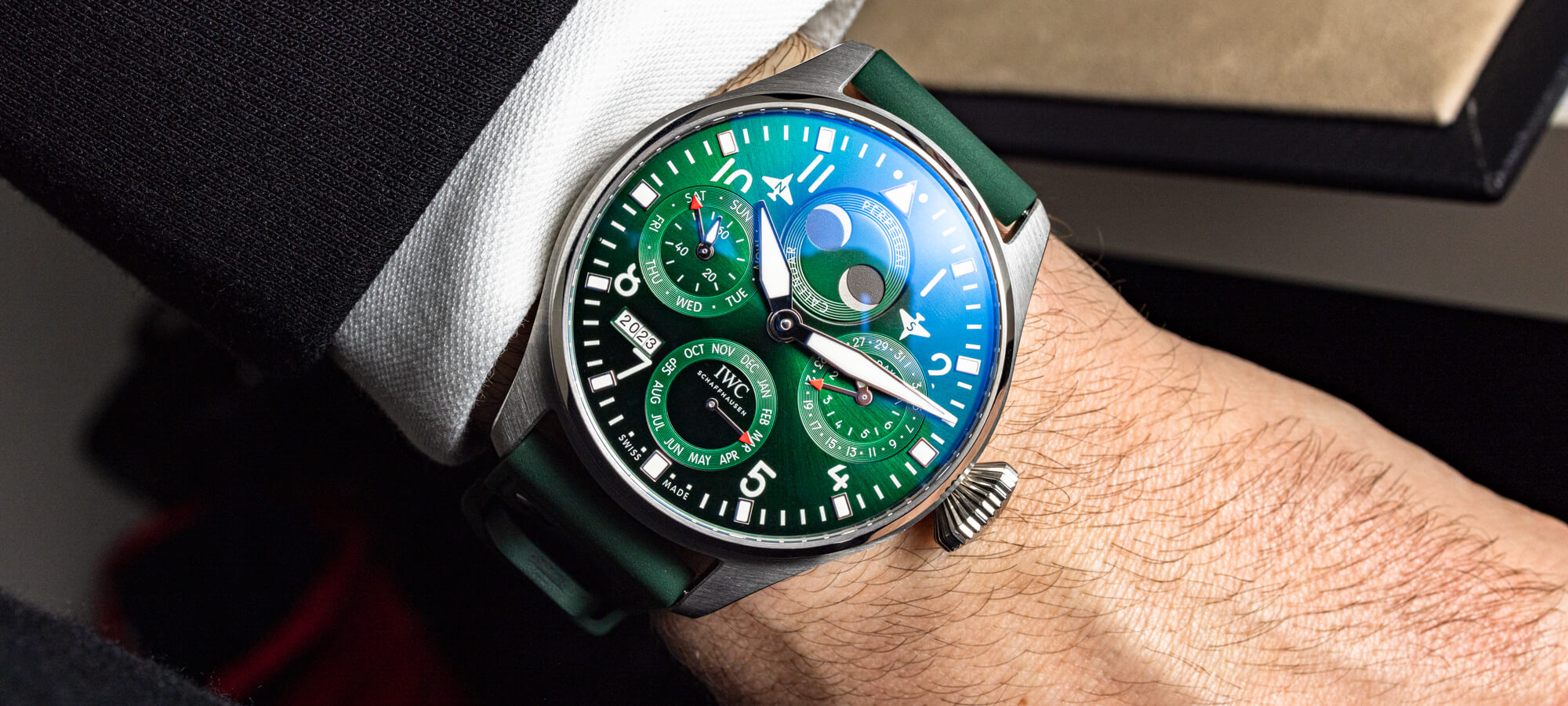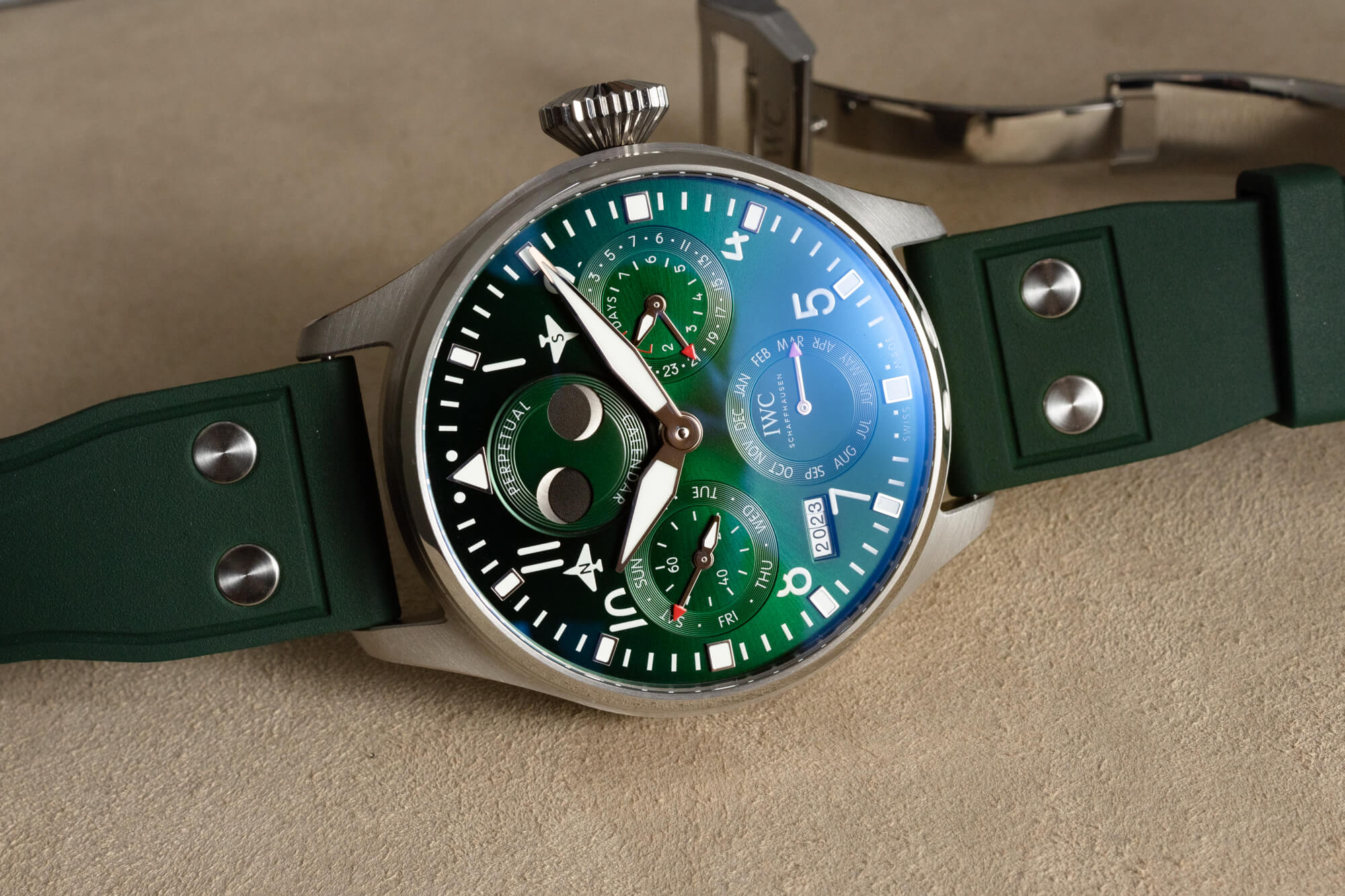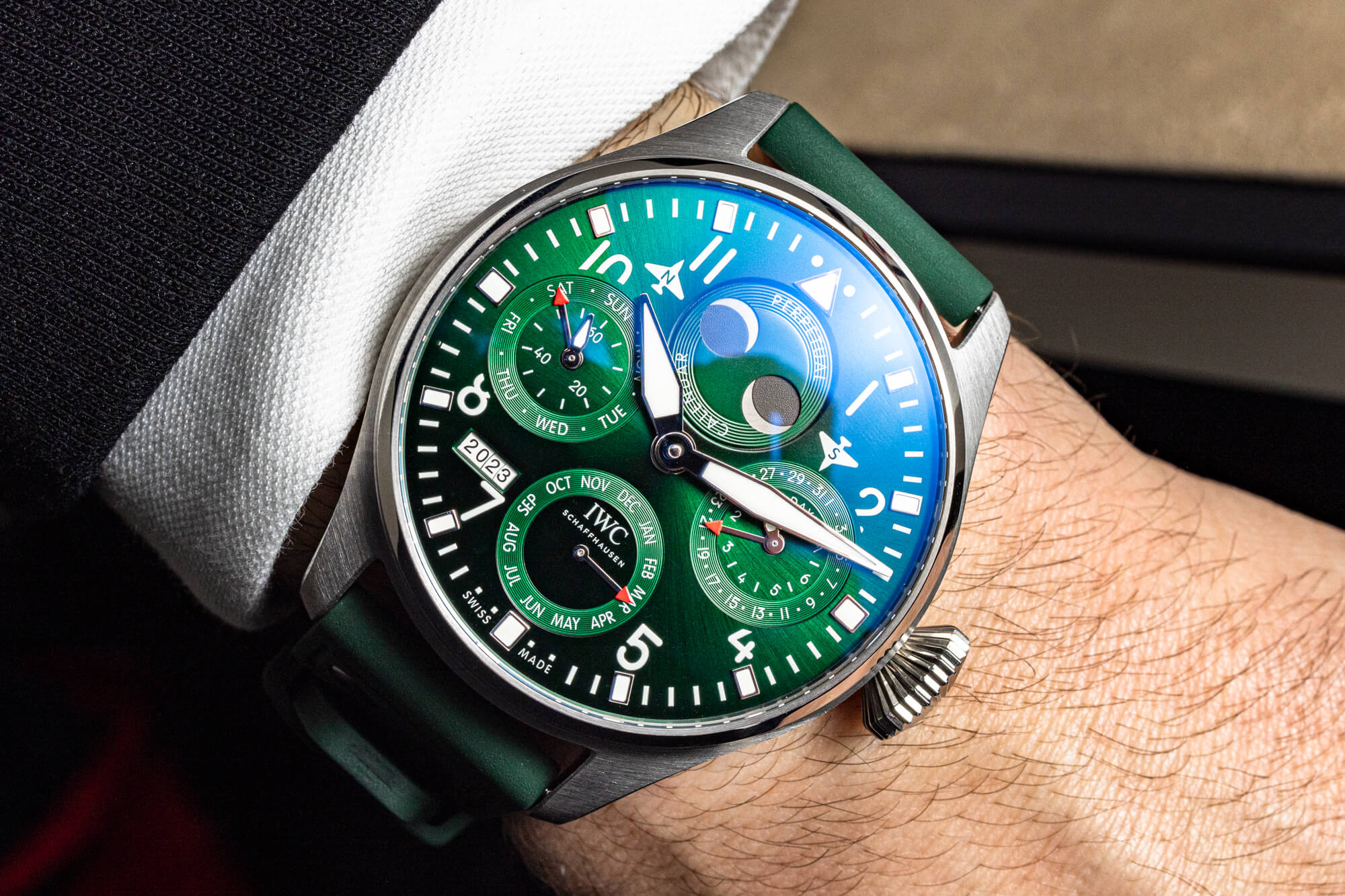Sitting near the very top of IWC’s historic Pilot’s watch collection, the Big Pilot’s Perpetual Calendar models don’t just offer one of the brand’s most advanced movements. The Big Pilot’s Watch Perpetual Calendar models come in steel; white, blue, or black ceramic, and the brand’s proprietary black Ceratanium; you can also get one in gold with a tourbillon. Aside from the Big Pilot’s chronographs, the Perpetual Calendars also represent some of the largest watches from IWC (or from any major luxury watch brand, for that matter). This year, the brand expanded the steel options for the Perpetual Calendar with an all-new green dial, a color that remains on-trend and one that IWC is pushing hard throughout its catalog.
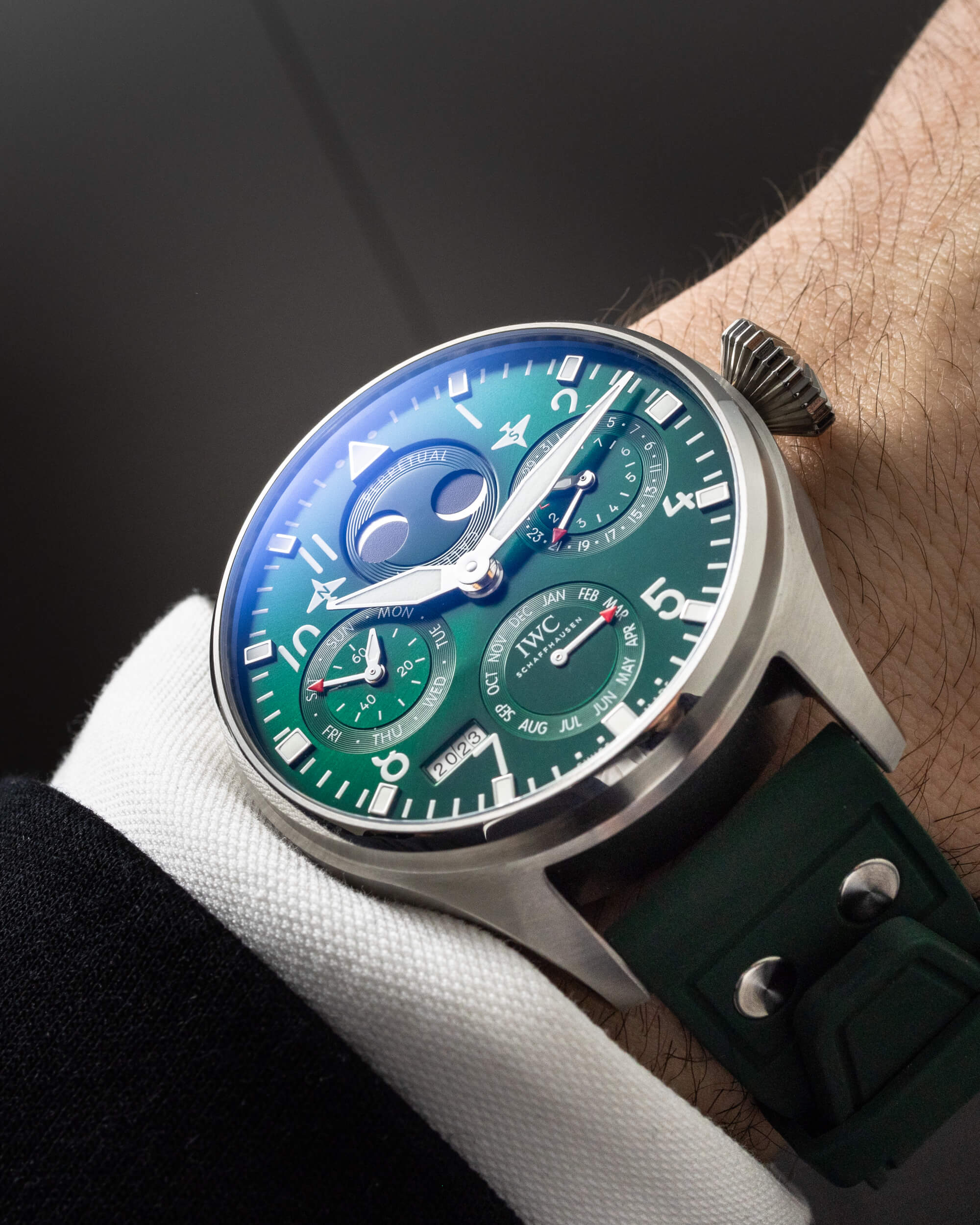 There’s no escaping the enormity of the Big Pilot’s Watch Perpetual Calendar. At 46.2mm across and 15.4mm thick, the watch will dominate any wrist. But context is important here. This isn’t big because the brand couldn’t make it smaller (the 44mm Portugieser Perpetual Calendar uses the same movement, and IWC also offers 40mm and 42mm models with a 3-register perpetual calendar movement). This is the Big Pilot’s. Its entire raison d’être is to be huge. Rooted in the historic Flieger watches that were made for actual pilots, the Big Pilot’s collection is all about the jumbo size that airmen required way back when. When you’ve got this on the wrist, there’s an acknowledgment of the Big Pilot’s styling — the enormous crown, the almost entirely brushed finishing, the slab-sided case — as well as the breathing room the dial has, and it all seems just fine and manageable. It’s big with purpose, and that purpose seems to justify its size.
There’s no escaping the enormity of the Big Pilot’s Watch Perpetual Calendar. At 46.2mm across and 15.4mm thick, the watch will dominate any wrist. But context is important here. This isn’t big because the brand couldn’t make it smaller (the 44mm Portugieser Perpetual Calendar uses the same movement, and IWC also offers 40mm and 42mm models with a 3-register perpetual calendar movement). This is the Big Pilot’s. Its entire raison d’être is to be huge. Rooted in the historic Flieger watches that were made for actual pilots, the Big Pilot’s collection is all about the jumbo size that airmen required way back when. When you’ve got this on the wrist, there’s an acknowledgment of the Big Pilot’s styling — the enormous crown, the almost entirely brushed finishing, the slab-sided case — as well as the breathing room the dial has, and it all seems just fine and manageable. It’s big with purpose, and that purpose seems to justify its size.
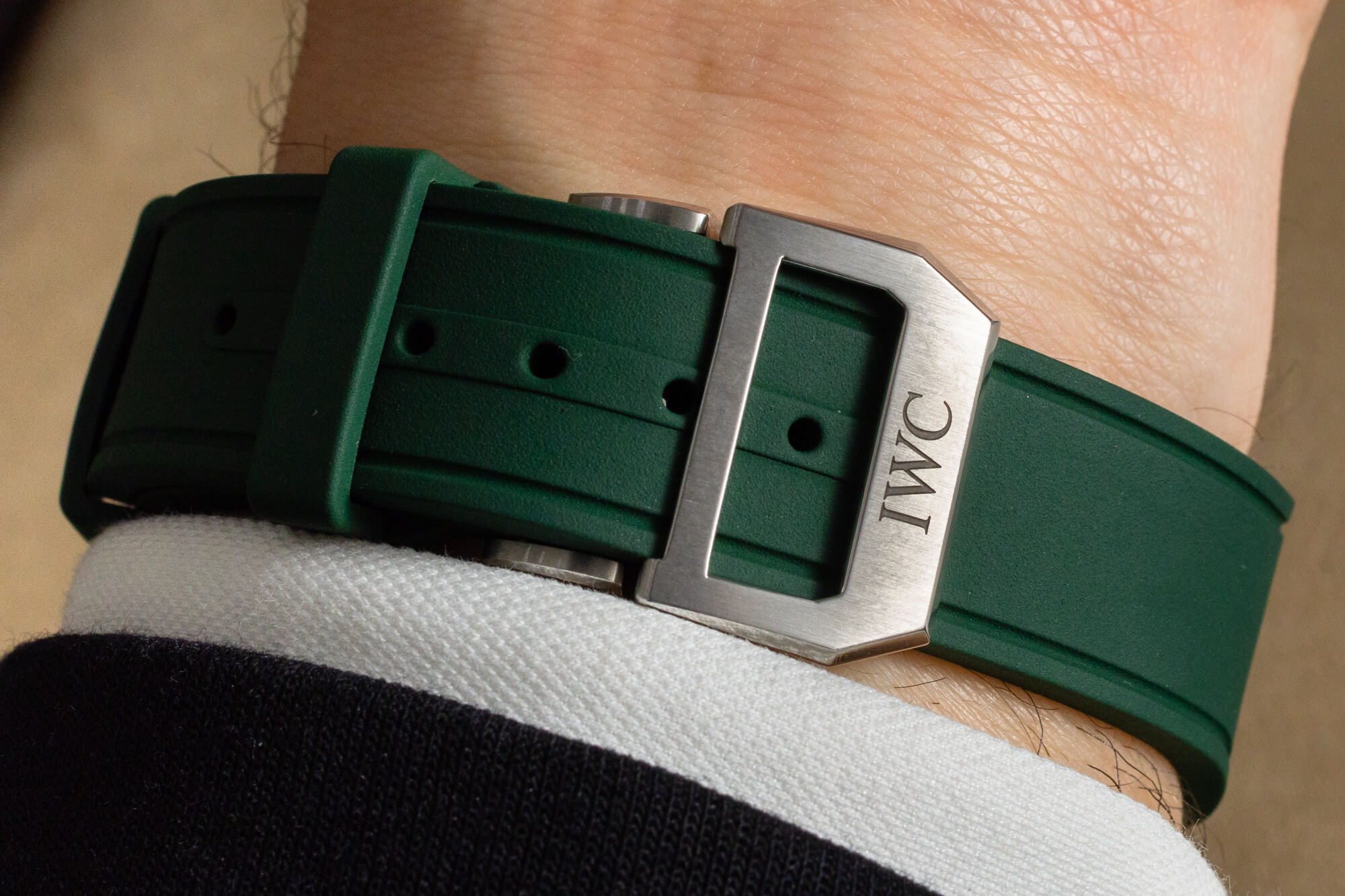
It may sound weird, but one of the highlights of the Big Pilot’s Perpetual in green is the coordinated rubber strap. The bright red and blue rubber straps that went with the Pilot Chronograph IWC did with Mercedes-AMG Petronas are some of my favorite, and it seems every IWC rubber is exceedingly comfortable. That makes a big difference on a watch like the Perpetual Calendar, and it makes the size even more manageable than the curved lugs do. Interestingly, the blue-dial version of the watch is fitted with a brown leather strap with the same pilot-style riveting, but is not available on a blue rubber. The hardware on the strap is exceptional. The deployant buckle is secure and easy to open and close, and the brand’s proprietary quick-release EasX-Change system is one of my favorites in the industry. Unlike many other brands, IWC doesn’t force you into its strap ecosystem. The EasX-Change mechanism simply latches onto a normal spring bar (though it needs to be the right thickness), and you’re good to go. That means you can put any strap you want on this watch, and you can wear the strap with any other watch.
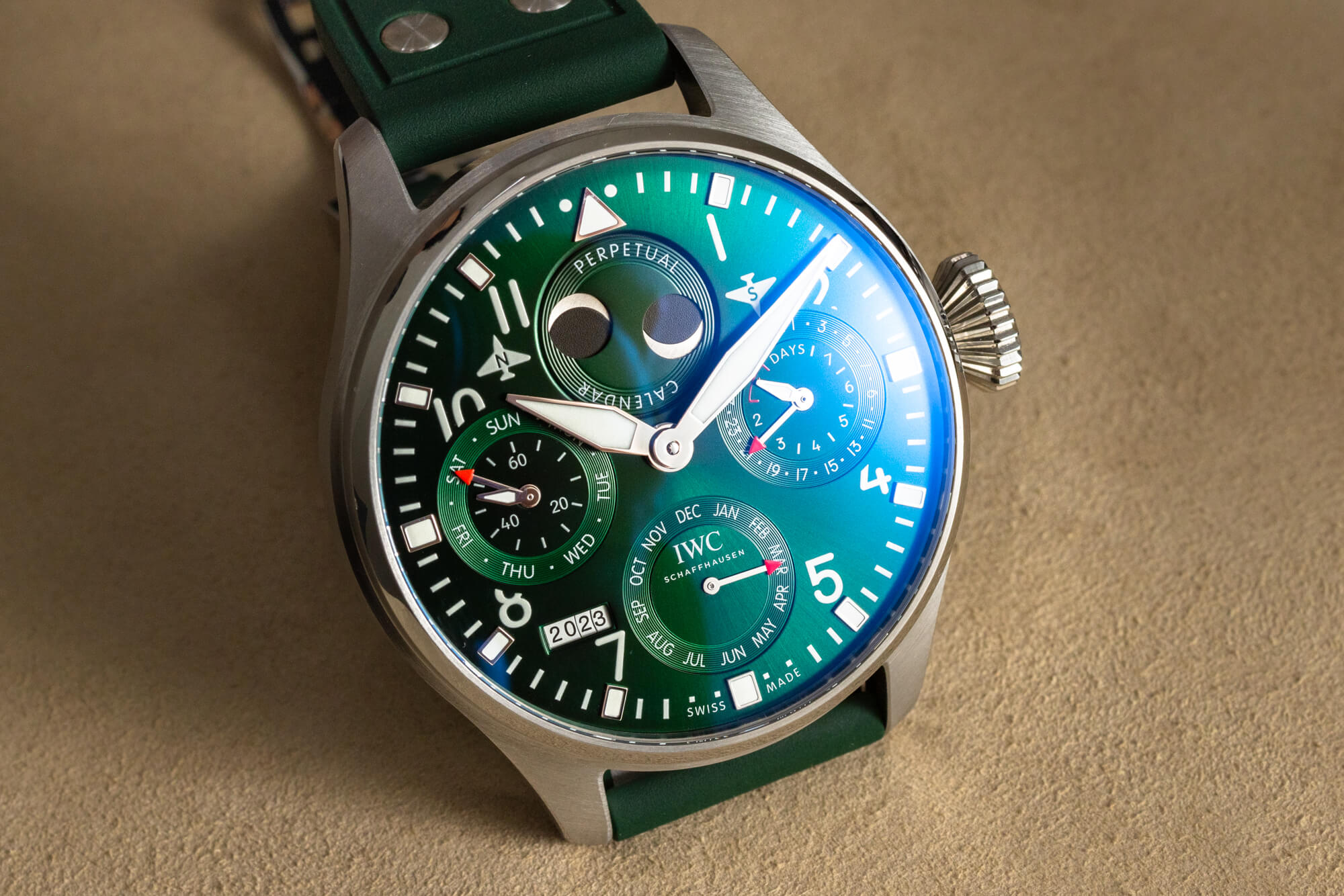
Building on the functional case, the dial is arguably one of the sportier perpetual calendars available right now. The emerald green is a striking color, made more so by the sunray finish that radiates from the center, through the subdials, and to the edge of the dial. The large, applied indices feature lume, and the simple numerals are legible. While the lopping off of some may chagrin a few enthusiasts, the dial is full enough that you never really notice it on the wrist. (I’d also like to argue that this is a petty aesthetic gripe that people seem to have; certainly, any true enthusiast doesn’t even need any numerals to actually tell the time?) Because of the dial’s outsized proportions, IWC is able to make everything easy to read. Unlike smaller perpetual calendar displays, there’s no squinting necessary to enjoy every display.

The power reserve display smartly shares a sub-register with the date pointer, while the running seconds sits subsidiary to the day of the week register. To solve any confusion that may happen, the interior display is indicated with a lumed pilot-style hand, while the exterior is tracked with a red pointer; a 9 o’clock, a red pointer also indicates the month. All the subdials feature radial grooving around the perimeter, but the dial standouts for me are the double display of the moonphase at 12, showing the moonphase in both hemispheres (that’s what the little planes are for), and the full year display at 7:30. The full year is so uncommon on perpetual calendars that it becomes special here. I’ll also admit that I find leap year indicators to be perhaps the most useless of indications commonly included on a perpetual calendar. The entire point of having a perpetual calendar is so you don’t have to worry about whether or not it’s a leap year — why would I need to see that?
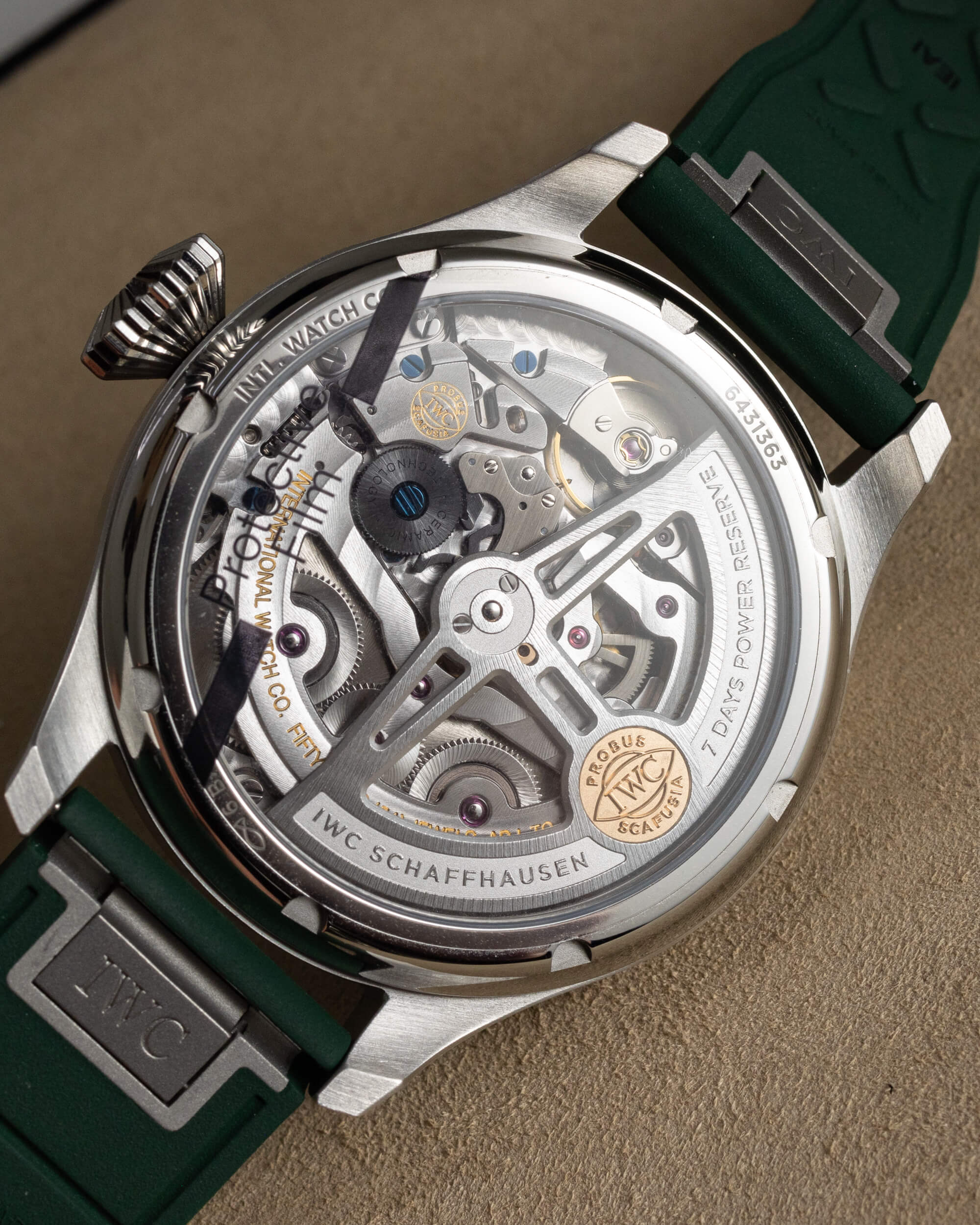
The Big Pilot’s Watch Perpetual Calendar is powered by IWC’s in-house automatic 52615 Calibre. With a 7-day power reserve at 28,800 vph, the movement is set up for the realities of owning a perpetual calendar watch. To be sure, this is one of the few instances where a long power reserve really does make a difference, giving you a bit of cushion between wears, though you’d probably be best served keeping this on a winder. That said, a quick examination of the case will find no extra recessed pushers or correctors because the movement is programmed and synchronized at the factory. That means all you have to do is advance the date with the crown and everything else will go with it. It’s an ingenious solution to the laborious task associated with setting other perpetual calendars.
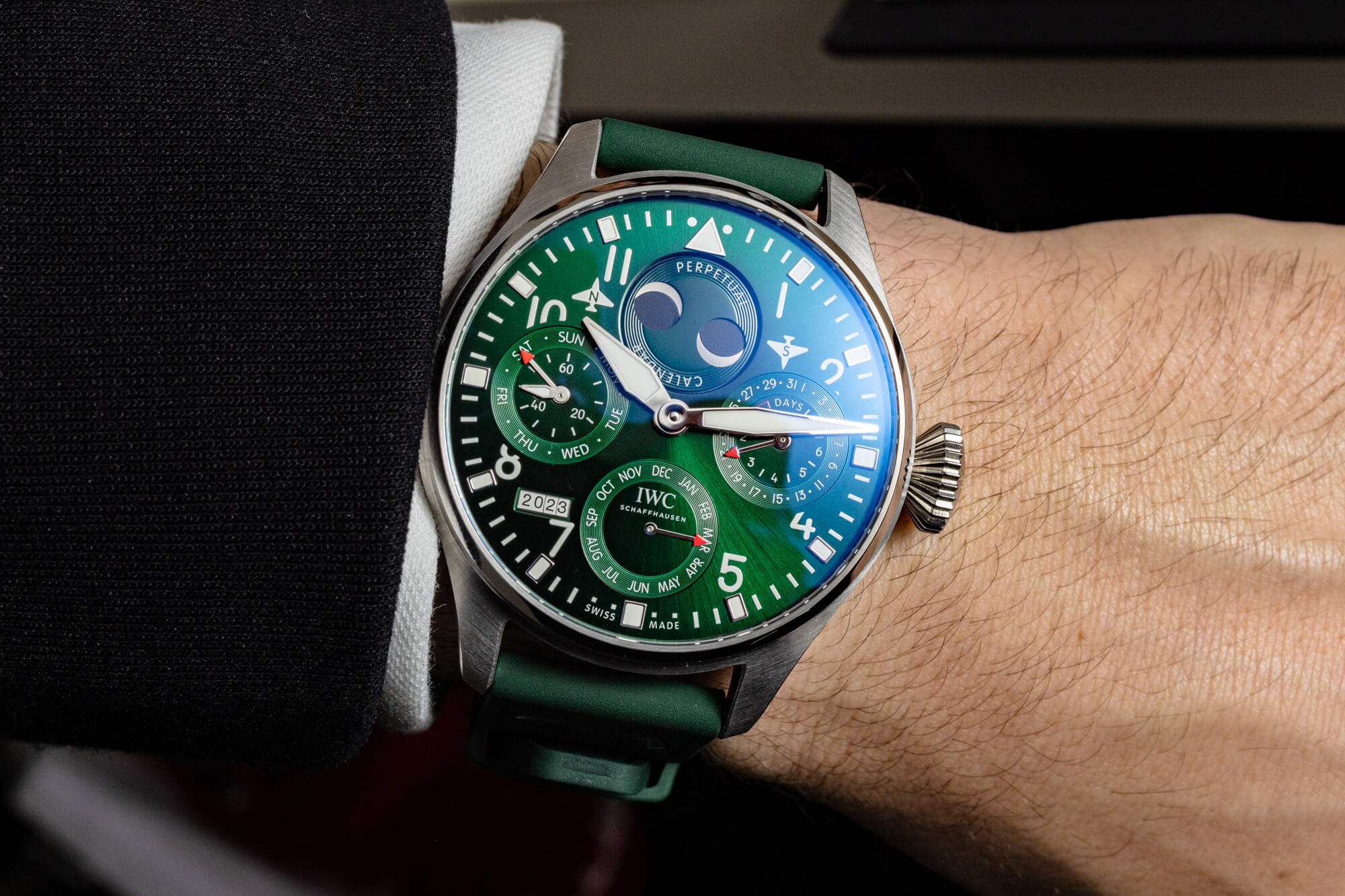
The IWC Big Pilot’s Watch Perpetual Calendar may be the least fussy, most functional perpetual calendar on the market. This complication is often cased in more elegant watches with precious metals, but IWC’s use of the jumbo Big Pilot’s platform gives this a far more rugged, sporty look than its contemporaries. The size will be an obstacle for most, as for many this will simply be unwearable. Those who can manage it (or just don’t care how a watch looks on their wrist) will be beyond happy with the watch and its new vibrant green dial. The IWC Big Pilot’s Watch Perpetual Calendar (Ref. IW503608) is priced at $33,000 USD. For more information, please visit the brand’s website.

